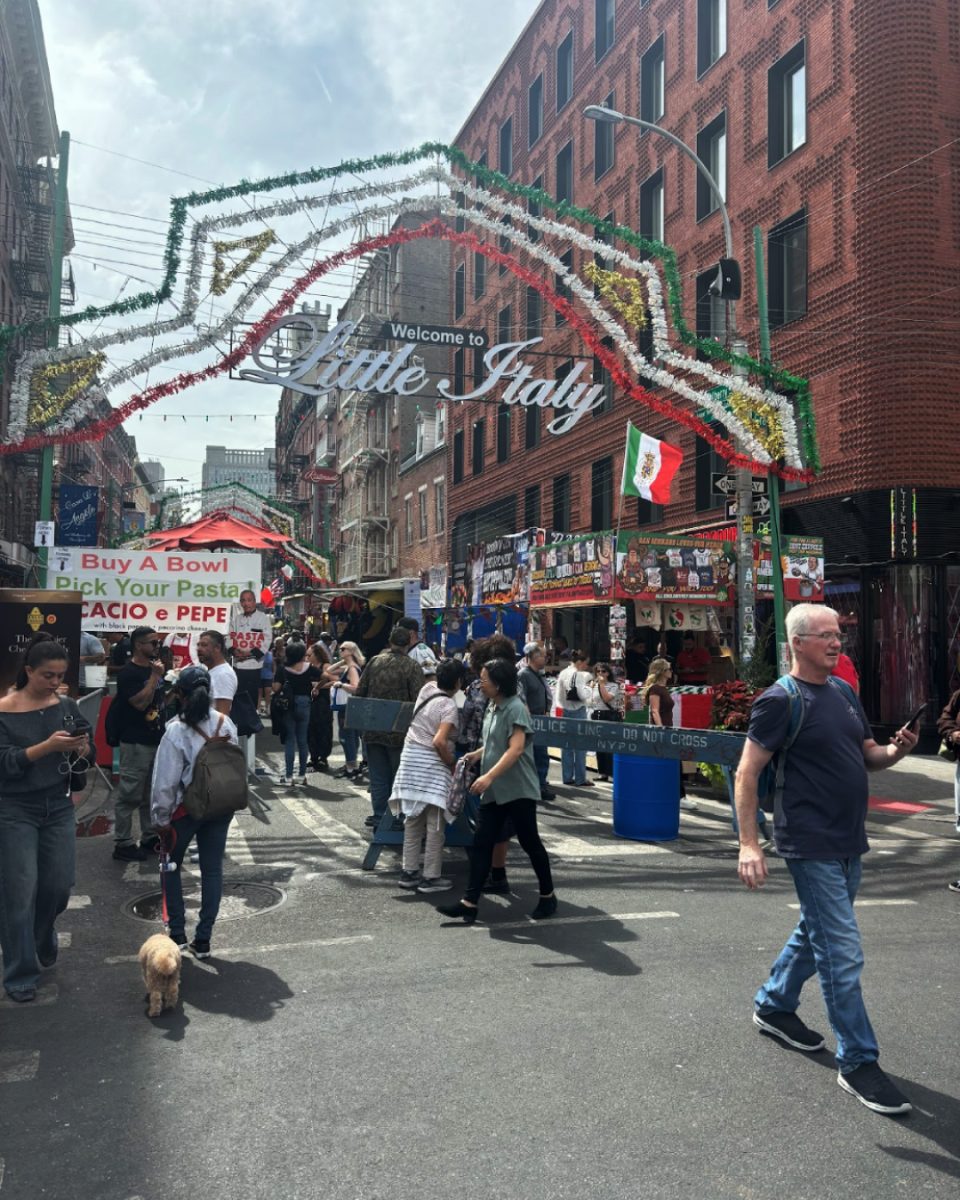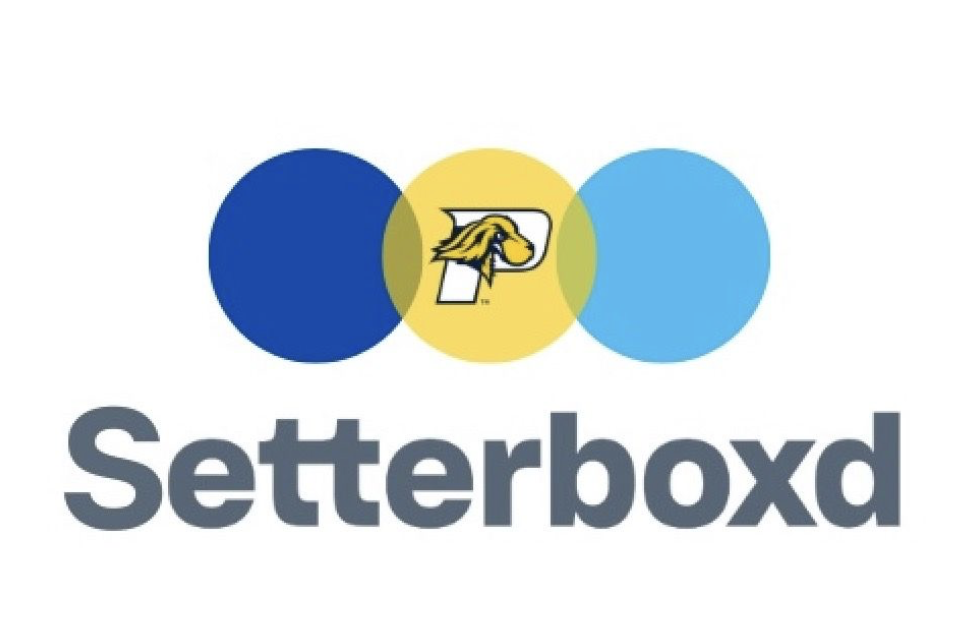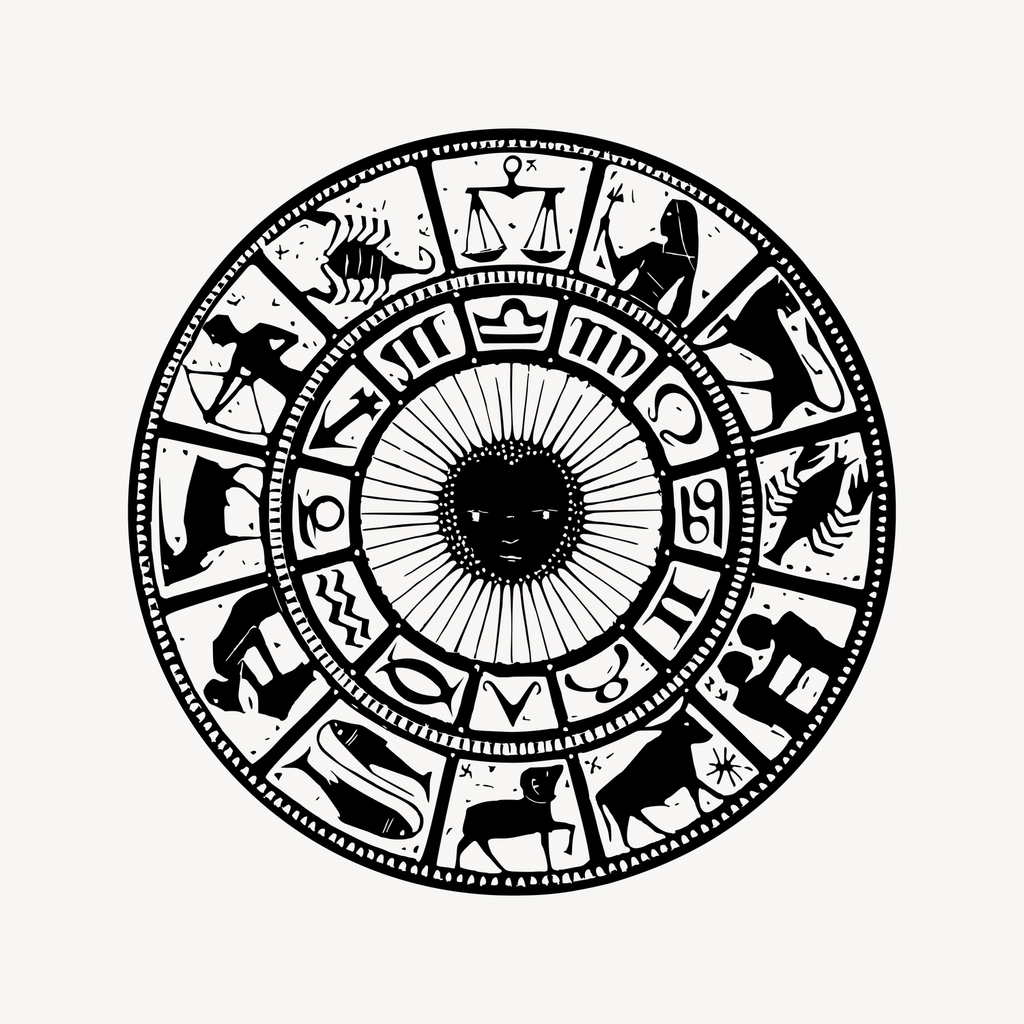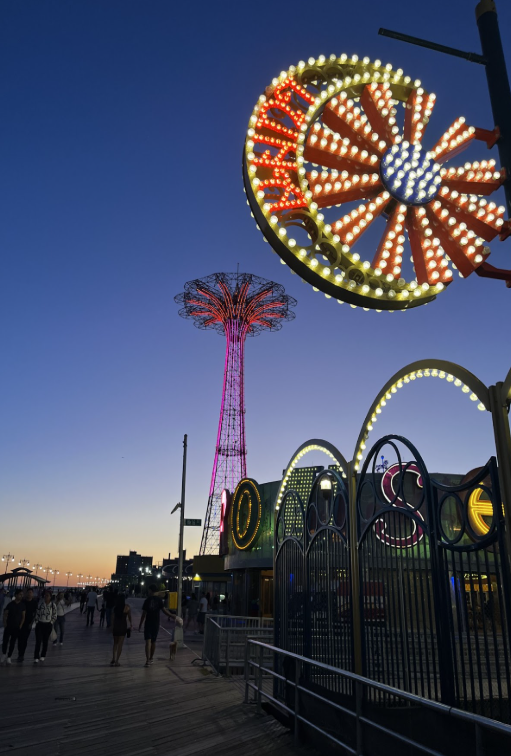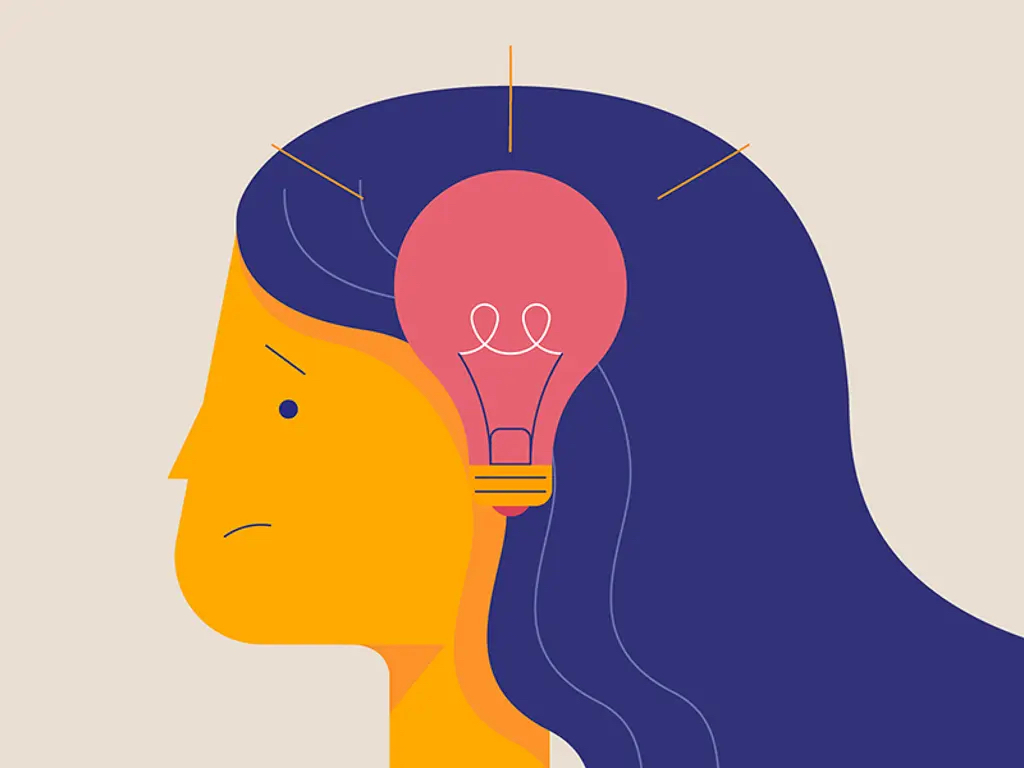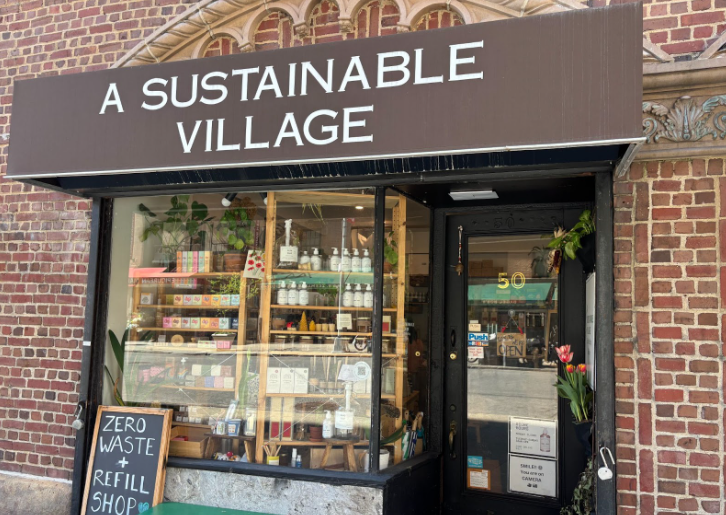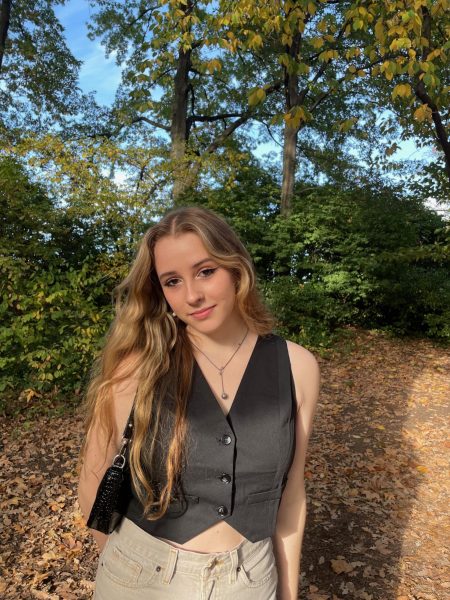The creative terrain of New York City is brimming with art, culture, food and creators. In today’s digital age of automation and AI, the definition of “art” has expanded, encompassing nearly anything and everything. It feels necessary to ask what exactly constitutes art today, examine who is allowed to make art and declare themselves an artist, and consider who is most visible in the art industries and who is left unheard, unseen and pushed to the fringes of society.
University students Will Dooley, Arts & Entertainment Management senior; Olivia Gallo, Art major senior; Fiona Torres Moino, Film & Screen Studies senior and Quintessa Morris, Business Management senior, are student artists taking on the creative world today. Speaking of their involvement and dedication to their various practices, each explained their artistic origin stories and how their journeys reemerge in their work today.
As a musician, Dooley explained, “Both my parents were musicians, and I started playing guitar. There’s videos of me playing when I was two, and ever since then, I just couldn’t stay away from it, and I’ve been playing ever since.”
Mixed-media artist Gallo stated, “I would say that I’ve always been into photography, ever since I was five. That’s when I would get the little disposable cameras, but I didn’t really get into art until high school, which is when it became the most interesting to me. I had a really good teacher. She was just really helpful in making me more creative.”
Torres Moino, an International student from Argentina, recalled, “The first thing that got me into the art world was my mom because she is an actress, and I used to go with her to auditions, and I ended up doing auditions as a little kid. So, I just started booking jobs, and I loved it. I did that for a long time. I acted in commercials back in Argentina, and then I decided that I wanted to get into the other side of the camera. So I decided to study film to figure out how I can direct and manage the camera and everything on set, and that brought me to photography, which I love. I think nowadays it’s maybe the art that I like the most.”
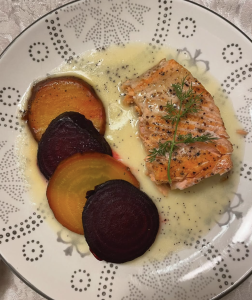
Culinary artist Morris described her cooking passions: “It started at a very young age. I’ve always loved to cook. When I was three, I was always wanting to help out in the kitchen, and I just enjoyed doing it. I would attend cooking camps during the summers as a kid, and I would cook at home, experiment in the kitchen, I’d go through baking phases…”
For many artists, art and life itself are deeply intertwined. From process to practice to finished product, a blurring between oneself and one’s art can render everything in between indistinct. As student artists, each University student had a diverse approach to their pursuits and practices. However, the common thread between them all was their unwavering certainty in their creative paths. As full-time students, each described their art/school/work/life balance.
Considering how he manages this precarious balance, Dooley said, “[My art] controls everything I do. In my free time, I’m either writing music or playing guitar, and you know, I planned my classes this semester around rehearsals and playing shows. Everything makes way for that, and I’ll figure everything else out.”
Torres Moino described, “I plan my day to do what I need to do for my academics and my internships, but I also just do my art whenever I’m inspired. If I see a photograph I really want to take, and even if it takes time to do so—like set it up with a tripod and all that—I will do it immediately. So, what I do to balance it out is just do it when I feel it… I just keep doing art all the time; it’s part of me.”
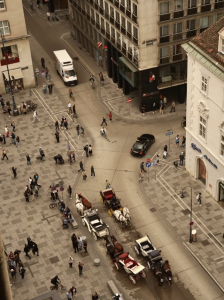
Gallo shared, “Well since I’m an art major, my academics are mostly focused around art, so it gives me the opportunity to always be working on it. I also work on a farm, so I’m always outside, which is where I thrive.” Gallo often explores landscape photography, incorporating themes of nature, peacefulness and “quiet” into her work.
The creative spaces these artists traverse today are seemingly under threat. They are bombarded with automated alternatives that push out immense quantities of work. The quality and integrity of this work appear to be left unspoken. Increasingly unclear lines between “authorship” and “creatorship” are being smeared this way and that, with artists being forced to decide the boundaries of their artistry for themselves.
According to Dooley, living in New York City plays a huge role in his music career—offering both advantages and challenges. He explained, “I mean, especially in New York, it’s a really oversaturated market. There’s a lot of opportunities; there’s probably more opportunities here than anywhere else in the world. But… anyone else in the world can [take] those opportunities. So, it’s hard to find something consistent and concrete that you can really build a platform off of, but those opportunities are out there; it’s just a case of finding them.”
Considering technology and urbanization concerning the culinary arts, Morris shared, “I feel like there’s probably a lot of people right now using AI to look up recipes or to try to be innovative and just have new creative ideas… I think that [AI] can be really helpful if you’re kind of stuck or have a creative block and you’re trying to come up with a recipe. Even then, I don’t think it’s going to be as authentic or interesting as what a human can come up with. Besides AI, there are robots that are able to cook food… It’s kind of really scary. I don’t know if they’ll ever get to a point where they could take over a chef’s job, but I think a huge part of food is that connection that you have with people through food. I think a big part of the culinary world is people want to cook with love, and when you’re working with your hands and doing everything from scratch, you can really taste the difference in the food.”
In regards to the ways that technology has influenced his creative process in the music industry, Dooley expressed, “I think it has [influenced it] a lot because I started using production software when I was very young, too… just the limits with what you can push with that are a lot higher than what you can push with a guitar and an amp in your room… There’s a lot of opportunities there. And in terms of where it’s going? It looks grim, honestly. There’s not going to be much space for people like me anymore…”
Dooley continued, “With the AI stuff, people are like, ‘It’s a tool, it’s a tool, you know people didn’t like the typewriter when it came out or the computer when it came out!’ but well, that’s different. That’s an end to a means; it’s something where you can get your ideas out of your head. But your ideas are already able to get out of your head with music stuff; it’s replacing the actual creative aspects of it and doing things for you. 90% of it is the process of making something. Things made with AI don’t have any soul in them at all.”
Photography, a medium being pushed towards digitized mechanisms, faces challenges at the core of its practices. Reflecting on digital editing software and social media, both Gallo and Torres Moino expressed their apprehensions about the practice’s future.
Gallo further underscored her mixed feelings about AI, “With AI, you’re basically typing a prompt. You’re not really doing any of the work, which doesn’t always sit right with me… It’s definitely a helpful tool to have, but I feel like there’s no emotion in AI, and it’s harder to connect to you in a way.”
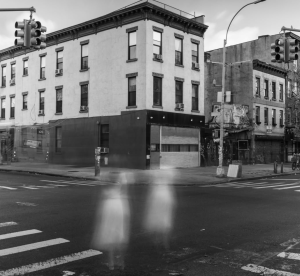
Torres Moino shared, “I use Photoshop to edit my pictures and Premiere Pro to edit my videos, and I use Instagram to share any kind of artistic thing that I do. I think that art is more accessible than ever nowadays. Back then, you had to spend a lot of money to get a functioning camera and get film roles, and the same with cinema—to make a movie was super expensive, and nowadays anyone can make a movie. But it has made it more challenging to make something that matters or is paid attention to. Since everything is easier, people think less about it; I think people push their creativity less.”
Reflecting on their individuality as authentic artists, the four considered the mark they hope to leave on those who experience their work and what this means in a world dominated by digital culture.
Poised from an international angle, Torres Moino asserted, “I hope to shed light on little things and international issues that people don’t really see or think about every day. I just hope it makes people [be] more open to the world in general and keep their eyes open and paying attention to what’s going on around us in other countries and continents… I feel like sometimes, in countries like the one we are living in right now, there’s a lot of problems that are created from not having real problems. There are places where there’s war, and there’s hunger… So, I don’t know, I just hope to shed light on the real things happening around so that people can pay more attention and maybe do something to help.”
Morris explained the ways in which food brings people together to create connection, stating, “I just want people to be happy, to make them smile. It’s really fun to see how people react when they eat my food… I think when people eat my food, I want them to be able to be quiet because that means they’re so in love with what they’re eating, they can’t even speak.”
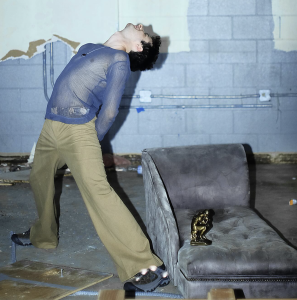
According to musician Dooley, “The answer is something. Like, I don’t care what you take away from my music because, at the end of the day, I’m making my music for me, and I enjoy collaborating with other people, and I like to share that. But I really hope people can take away multiple different things from the music I make; I want people to interpret things in their own way.”
Gallo expressed, “I mean, I hope they like it obviously. But I also hope that it’s something people walk away from feeling inspired to do something similar… And is something that people can talk about.”
On giving advice to other young University student artists trying to find their voices, the four drew from their own experiences—the good and the bad.
Dooley candidly expressed that “I think [the University] is a very bad place to be for a young artist in terms of opportunities to collaborate with people and play shows and do all those things because the clubs that are in place to provide those things either just don’t do them or don’t get enough funding to actually help people. There’s a lot of resources in the city; [the University] is not one of them. However, with my [Arts &] Entertainment Management major, you can still learn things that will help you with your career that you wouldn’t learn at any place other than a university or some sort of business program. But you’re not going to get those performance opportunities. You’re not going to get opportunities to collaborate with other people unless you make them happen yourself… Make things happen for yourself because no one else is going to do it for you.”
Torres Moino proclaimed, “My main advice would be to, whatever your field is, go and see as much as you can. For example, if you’re a film major, go to all the film festivals that you can in New York. Of course, if you’re a painter there’s so many galleries and exhibitions around New York and [the] same with photography… Any field that you’re in in New York, you can get a lot of exposure. I think it’s really important to see what other people are doing because you might get inspired by it very instantly… Talk to people, go to exhibitions and festivals… do internships because you’re going to learn a lot. Just start doing something even if it’s little, because it’s really easy to make art nowadays.”
Gallo recalled, “Something one of my professors had told me is even if you think your own work is a failure, a lot of other people won’t view it that way. They’ll actually find it to be amazing or really cool. I think we’re always our hardest critics, and it’s hard to get over that. So just go for it.”
The wonderful University student artists are indescribably humble, talented and rising to greet the demands of 21st-century art communities. Find Dooley’s music, “Under ‘Will Dooley’ on every platform imaginable. My Instagram is @willdooleysmusic.”
Gallo’s photography and other art can be found on her Instagram, @olivialgallo. Chef Morris’ cooking can be seen on Instagram @quintessaskitchen and her website, quintessamorris.com. Finally, find filmmaker, actress and photographer Torres Moino on Instagram and YouTube under @fionatorresmoino.

